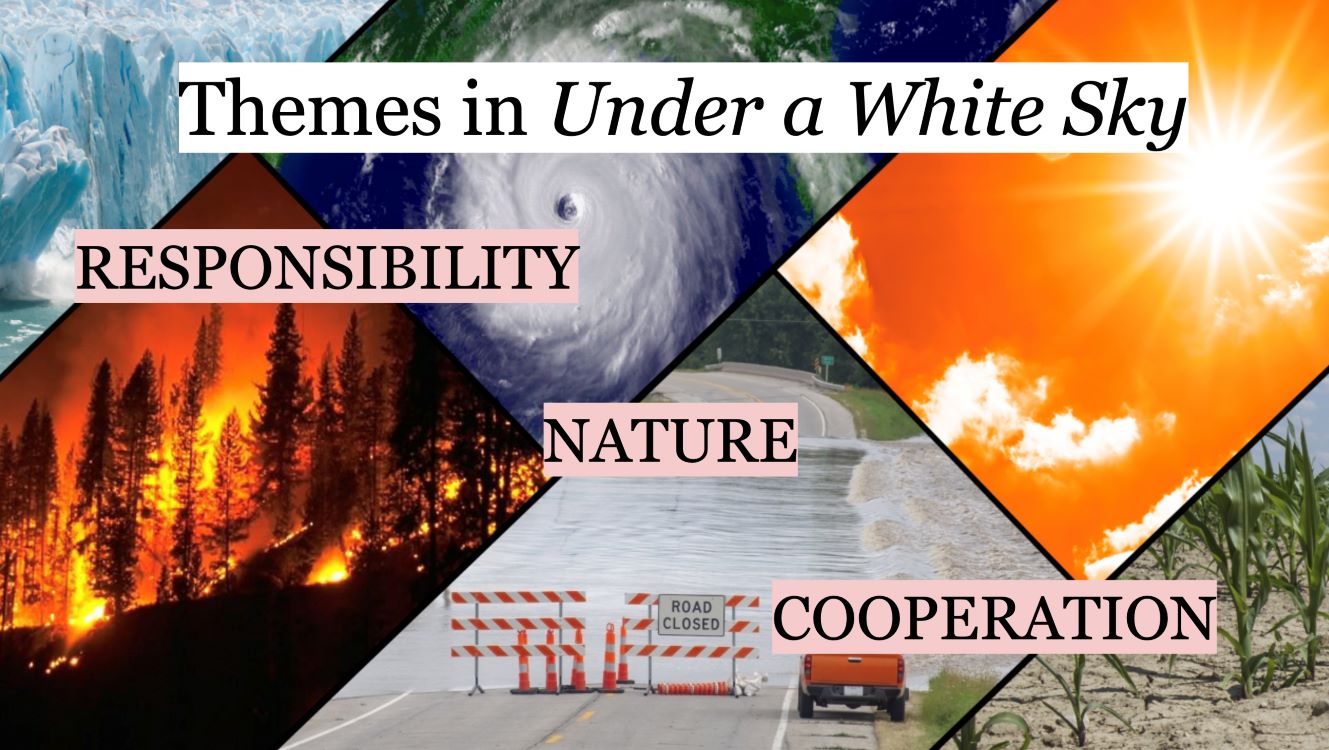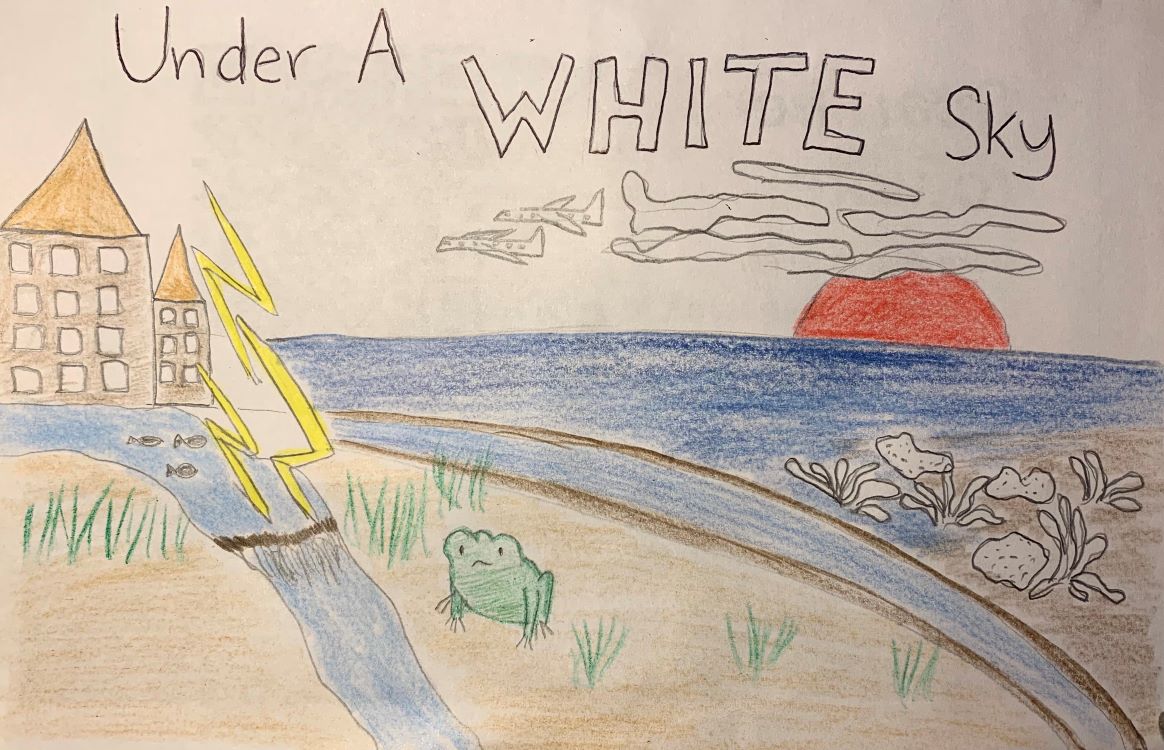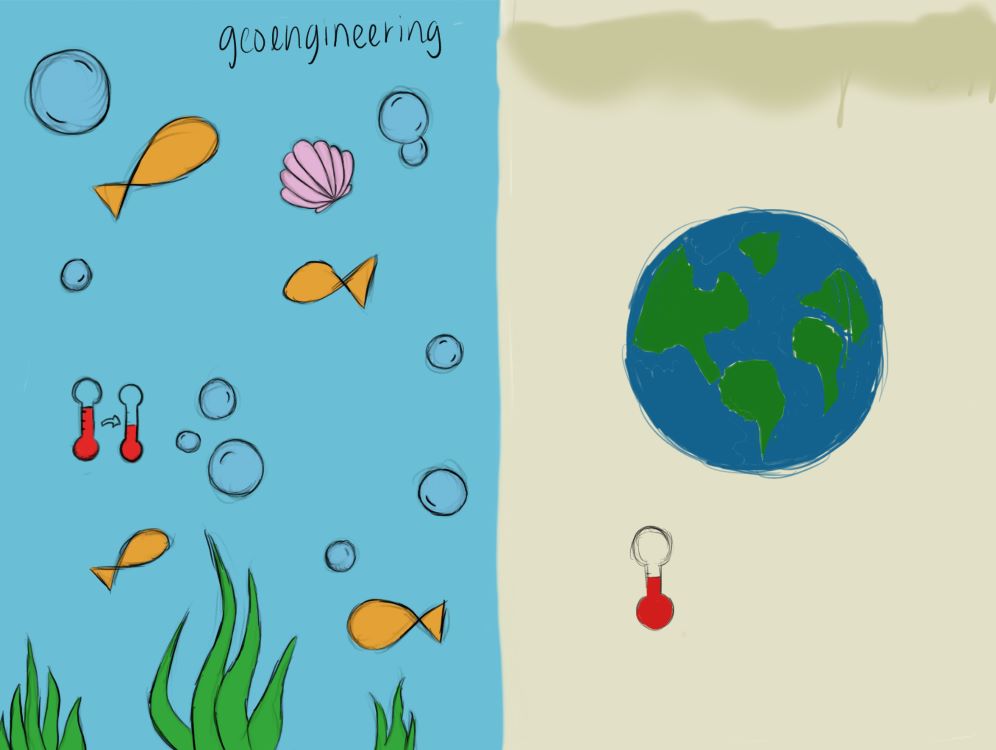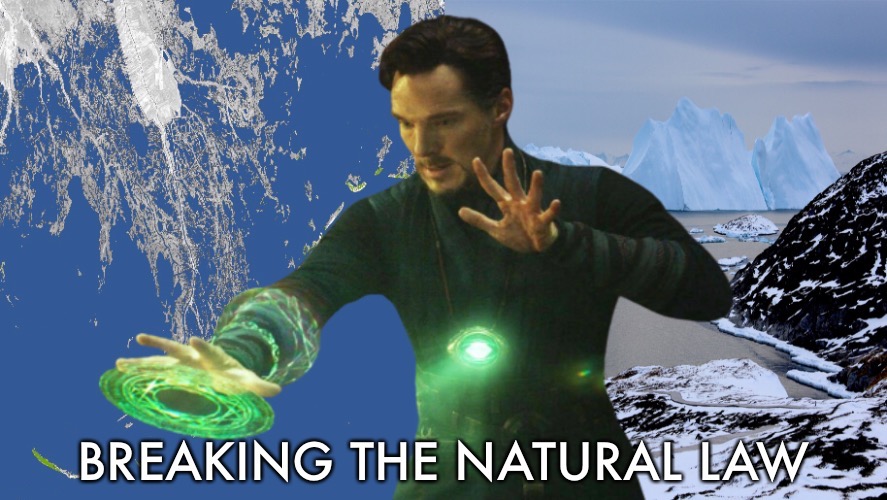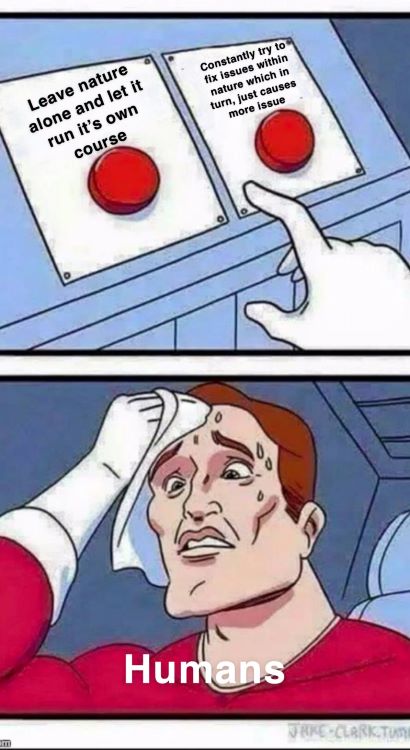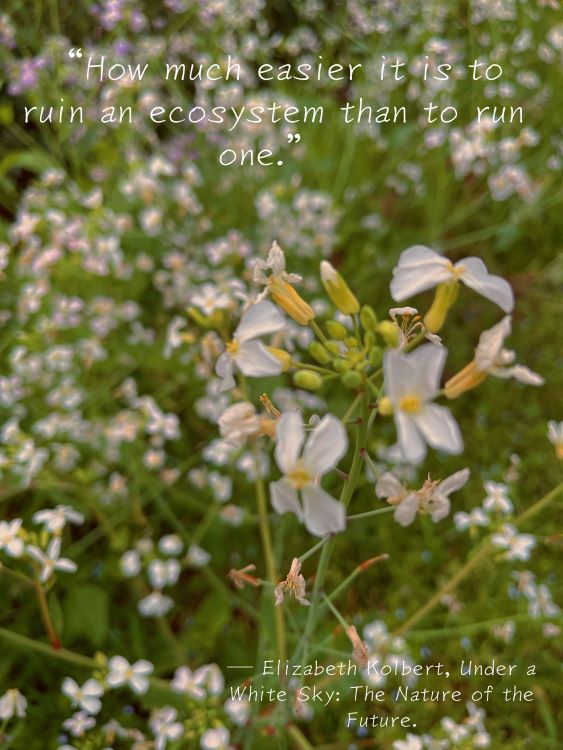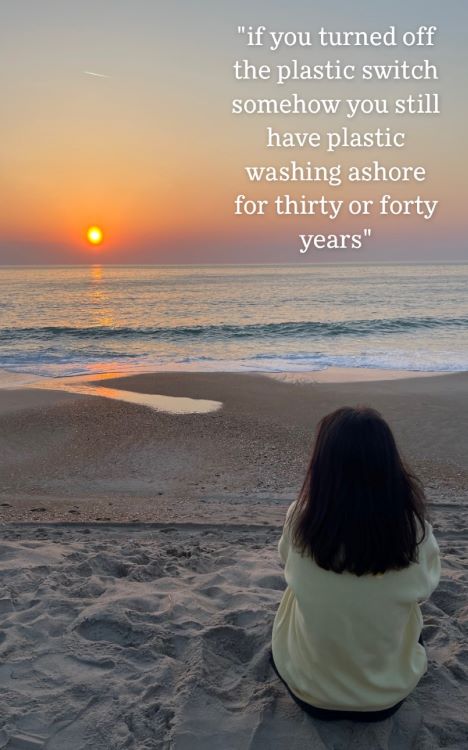This anonymous artwork highlights themes from Under a White Sky: The Nature of the Future by Elizabeth Kolbert. Against a background of images representing extreme weather, the words responsibility, nature, and cooperation represent the work people are doing to mitigate the effects of climate change. Kolbert shares many examples of creative approaches to this work, from a chef trying to create popular food products using plentiful, invasive Asian carp, to a scientist and her students helping coral practice adaptive evolution. The student artworks on this page react to themes discussed throughout Under a White Sky.
Priya Thamburaj's landscape invokes many of the stories Kolbert tells in Under a White Sky. On the left, Asian carp drift toward an electrocuted dam constructed by the Army Corps of Engineers to keep this invasive species from moving into other waterways. On the right, coral bleaching is evident. In the white sky above, airplanes contribute to pollution. Front and center, a cane toad frowns. Readers of Under a White Sky will wonder if this member of the invasive species was gene-edited with CRISPR.
In this digital artwork, Nadia Thomas illustrates the potential impact of geoengineering, a controversial technology that could be used to lower Earth's temperature.
In “Breaking the Natural Law,” Jason Shacket uses the movie Doctor Strange to represent current efforts to reverse environmental damage. He explains, “The picture I’ve created shows Doctor Strange in one of the most iconic scenes, in which he experiments with the Eye of Agamotto, a relic that gives its wielder control over time. Strange puts the Eye’s powers to the test by fast-forwarding and reversing the process of an apple being eaten and decaying.” Behind Doctor Strange, Shacket includes images of two environments impacted by climate change that Kolbert discusses: Louisiana’s receding coastline and Greenland’s melting ice caps. Shacket observes, “these two dilemmas relate to the image of Doctor Strange because he represents how mankind caused them as well as many others, and now it is attempting to reverse the damage.“
Cartoons convey the severity of climate change issues in these artworks by an anonymous student and Kylee McGinnis. The anonymous meme creator illustrates the absurdity of the decision between options to “leave nature alone and let it run its own course,” or “constantly try to fix issues within nature which in turn just causes more issues.” Reflecting on her artwork featuring dead fish, McGinnis laments that “we are killing ocean animals and the reefs, and it is impossible to know the extent of the damage we are causing.”
Jiefeng Zhu and Kiley Persolio use photographs of nature to reflect on reading they have done about climate change. Discussing challenges identified in Under a White Sky, Zhu writes, “to ruin, destroy, or pollute is easy to do, but to protect, to cure, to [achieve] harmonious coexistence is significantly difficult.” Persolio connects ideas from Under a White Sky to another book about environmental issues, Tracking Trash by Loree Griffin Burns. She shares that her artwork “reflects on the catastrophic damage plastic has over our oceans and how we must take action now to protect future generations.”

